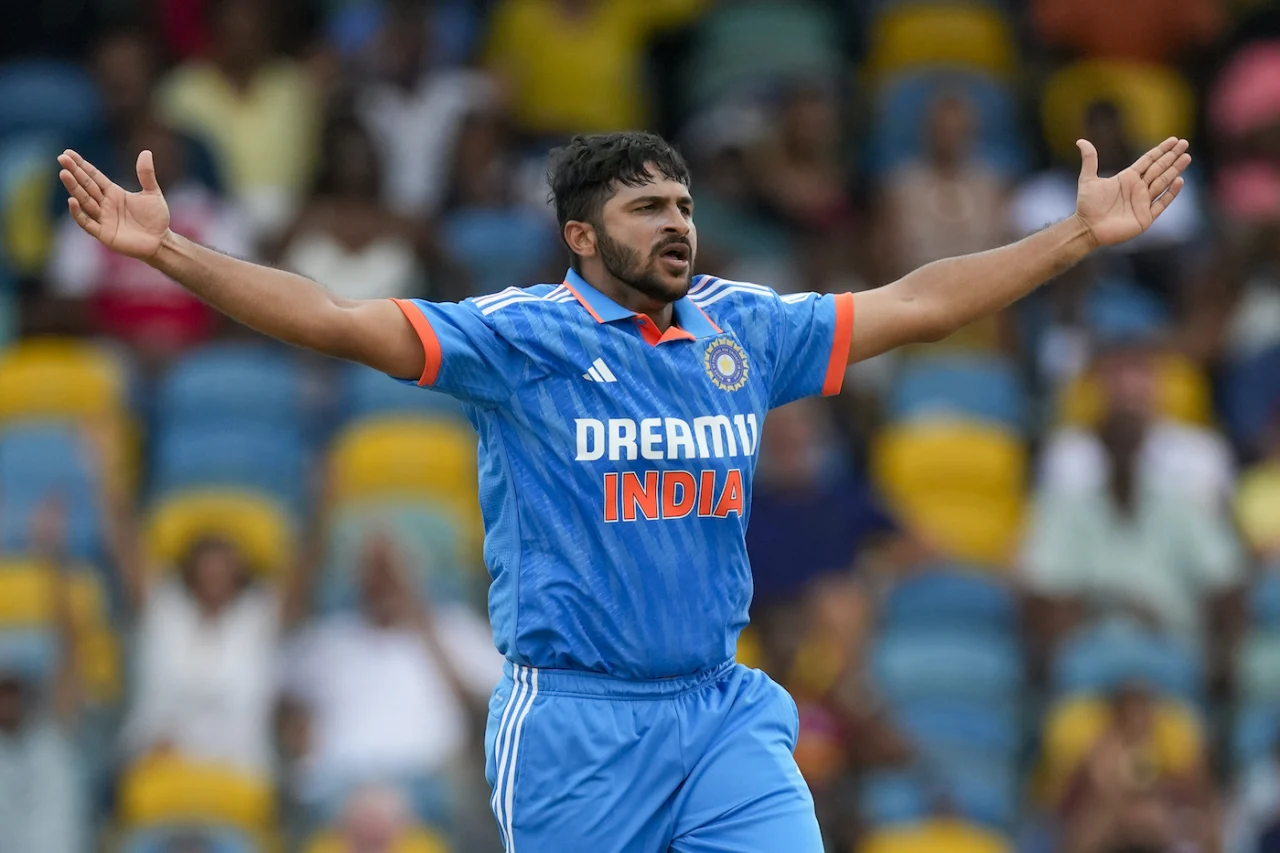Jack of all trades, master of none – India’s number 8 conundrum

India's search for the perfect ODI formula has seen them land upon Shardul Thakur for the loaded number 8 spot, with Axar Patel as his backup. However, the solution and, more importantly. the thought process to arrive there highlights a huge chink in the Men in Blue's approach to 50-over cricket.
Every major team sport has some version or the other of a role player. Basketball has the 6th man, a position recognized as so valuable that it has an award reserved for it in the post-season ceremonies. In the NFL, even players who do not get too much playing time have specific plays designed for them.
Football recently increased the substitutions allowed in a game from three to five, a change forced by the pandemic but increasingly favoured for adding dynamism and strategy at the elite level. Similarly, baseball has an old tradition of substitutes, as do hockey and handball.
However, cricket, as is typical, does not indulge in this shared patronage of team sports. Despite experiments in T20 leagues, the game at large continues to be a battle between two sets of 11. This attaches immense value to each player deemed deserving to be in a team’s lineup, requiring them to contribute in significant ways. It is why traditional wicket-keepers have slowly given way to glove wielders who can also bat while all-rounders have remained the sport’s most prized asset.
Role players thus have a limited role to play in cricket, especially in the longer formats where the need for contributions rises exponentially. Yet, when India named their 15-member World Cup squad, they were content to keep two spots for what Sanjay Manjrekar would probably describe as ‘bits and pieces’ cricketers in Shardul Thakur and Axar Patel. The former, in fact, has been a shoo-in to the Men in Blue’s ODI side for the past few years which begs the question, does he provide enough value to cement such a valuable spot?
Thakur primarily operates as a strike bowler in ODIs, majorly responsible for scalping wickets in the middle overs. While the seamer’s overall numbers seem decent at a glance, a deeper dive depicts the true picture. Since the 2019 World Cup, the seamer averages 34.6 with the ball in ODIs against the top-six ranked teams in the world while leaking runs at an astronomical rate of 6.81 – a fair way away from corresponding career numbers of 29.1 and 6.17 respectively. He has also conceded the most fours (143) and second most sixes (43) in this timeframe amongst bowlers of the 10 teams to have qualified for the World Cup.
— SportsCafe (@IndiaSportscafe) September 7, 2023
Yet, one can argue those numbers are manageable as long as he offsets the difference with his batting abilities. And herein lies the bigger problem – amongst players to have played at least 100 balls in ODIs in the ongoing World Cup cycle at number eight, Thakur’s average of 16.54 is the lowest by a distance. In fact, the next two players on the list who do not largely operate as full-quota bowlers are Mehidy Hasan Miraz and Dunith Wellalage, both of whom average 29-plus. Thakur has batted at number eight during this period 18 times while 11 other Indians have featured at the spot a combined 17 times and managed to outscore the 31-year-old by over 50 runs, despite five of them being out-and-out bowlers.
— SportsCafe (@IndiaSportscafe) September 7, 2023
It is equally concerning that Axar Patel is Thakur’s only appropriate replacement amongst the 15 India have chosen. The left-arm spinner averages 18.77 with the bat in his ODI career, which is still more than Thakur’s 17.66. For context, Deepak Chahar and Ravichandran Ashwin, two who could have been contenders for a World Cup spot, average 33.83 and 16.44 respectively despite operating as frontline bowlers almost guaranteed to bowl their full quota of 10. With the ball, Axar has managed just 13 scalps in as many ODIs since the 2019 World Cup, averaging 32.1 and striking only every 40 balls. It is important to note that including him in the lineup would also make India’s lineup significantly one-dimensional, given they already possess a bowler of the same profile in Ravindra Jadeja.
These selection choices depict a larger problem in India’s approach to one-day cricket. Thakur has the fourth most caps for India in ODIs in this World Cup cycle, ranking first among bowlers and all-rounders. The Men in Blue have simply been adamant about playing an all-rounder at that number eight spot, as emphasized by skipper Rohit Sharma in his press conferences. He was straightforward in revealing Chahal had missed out on a World Cup spot due to his lack of batting skills with the leg-spinner not even given a chance to stake his claim in the team, having played just two ODIs in 2023 and none since the end of January.
— SportsCafe (@IndiaSportscafe) September 7, 2023
The broad idea is understandable since it derives directly from England’s recent winning formula of stacking their side with all-rounders, indicated by the presence of just five specialist batters in their 15. Australia had adopted a similar policy in the late 2000s as well which has culminated in at least six all-rounders currently a part of their World Cup squad. However, the difference between the two and India is the quality of players – the likes of Mitchell Marsh, Marcus Stoinis, Chris Woakes, and Sam Curran to name a few are unquestionably better white ball cricketers than Thakur.
Another important factor that the selectors seem to have glanced over is that India do not necessarily need batting depth at number eight. The Men in Blue’s top-seven average 42 per dismissal since the 2019 World Cup – the joint highest alongside South Africa and significantly higher than both Australia (36.65) and England (35.38), while the strike rate of 96.93 is only second to England’s 97.29. In fact, India are just the second team in ODI history to score at over run-a-ball in a World Cup cycle following England’s sustained batting antics since 2015.
— SportsCafe (@IndiaSportscafe) September 7, 2023
As for the bottom four, only England average above 20, indicating the general lack of capable batters in ODIs in the bottom four. India’s insistence on an all-rounder has only placed them a middling fourth in the list with the sixth worst strike rate, unsurprisingly, given Thakur’s strike rate reads a poor 106 for a lower-order pinch hitter.
Simply put, India have bet on the potential output that has not materialized over actual effectiveness. They have little to lose by slotting in a specialist seamer at number eight, given their current options, albeit a spinner like Chahal could have done wonders on subcontinental pitches considering his recent form. Fielding the pace trio of Jasprit Bumrah, Mohammed Siraj and Mohammed Shami by dropping Thakur seems ideal from the outset, given it would allow the former to operate in the middle-overs while the other two function as an elite new ball duo. Since his ODI debut in 2016, Bumrah has an enviable record of the fourth-best average and second-best economy rate between overs 25 and 35.
Such contributions would go a long way in fighting for the World Cup, considering the upward ramp in scoring rate has meant the last two editions have essentially been won by a team’s ability to strike in the middle overs on the bowling front. In 2015, the two finalists New Zealand and Australia had the most wickets between overs 10 and 40 while England and New Zealand ranked first and third in the department in 2019 respectively, with the latter boasting the best average by far.
Shardul Thakur is thus the weak link in India’s ODI line-up in what is an extremely crucial role and should he fail to emerge as an elite strike bowler in the World Cup, it could prove to be fatal for the hosts’ hopes of winning their first ICC event in a decade.
